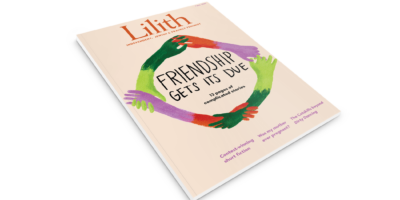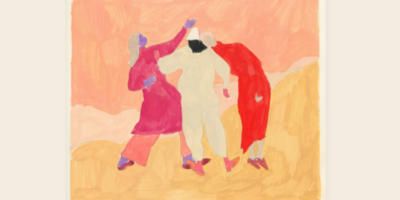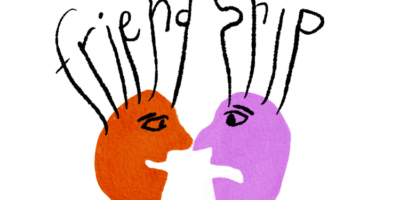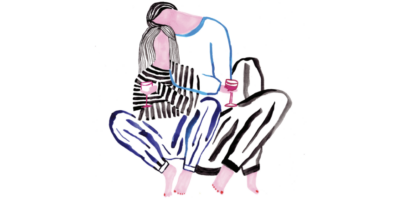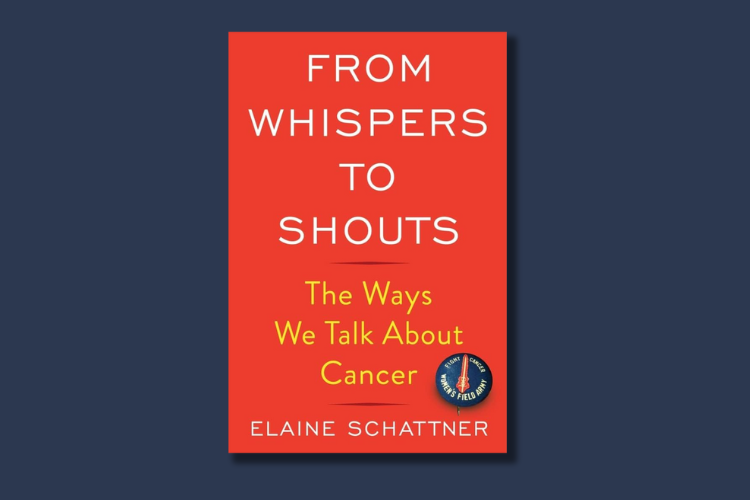
Cancer and How We Talk About It
During the course of my lifetime, cancer has progressed from a near-certain death sentence to a chronic condition for many. Much is due to advances in treatment. Cultural changes in public education and communication have also been key. Jews, who may be genetically predisposed to certain cancers linked to the BRCA gene, have been avid adopters of medical advances. Elaine Schattner examines these trends in From Whispers to Shouts: The Ways We Talk About Cancer (Columbia University Press, $29.95) with a panoramic study of how we talk about cancer and why it matters.
Schattner is primed for her task. An oncologist, researcher, journalist, and cancer survivor, she brings her broad experience to her debut book. From Whispers to Shouts is not a self-help book, nor is it a book about one writer’s triumph over cancer. Rather, it is a cultural history that considers evolving societal views about cancer—including fear and silence—and their impacts on patients. The book is illustrated with unusual photographs that buttress the narrative.
In a prologue, Schattner sets out her personal experience, which deepened her understanding that “the word on the street” about cancer differed greatly from medical and scientific knowledge. In addition, research opened her eyes to the “degree to which racist views and other prejudices, the notion that some human lives are ‘expendable,’ have contributed to, and…limited medical knowledge…” These threads run through the book.
From Whispers to Shouts is divided into three sections that progress chronologically: (1) Cancer Awakens, (2) Cancer Comes Out, and (3) Cancer’s Future. “Cancer Awakens” begins before 1900, when cancer was sometimes diagnosable, but cures were nonexistent, medical practices harmful, and horrific experiments were performed on Black and poor people.
In 1884, Ulysses S. Grant was diagnosed with cancer after finding a lump in his throat that impeded his eating. The public understood that the former president and Civil War general “was sinking into his grave,” as the New York Times reported. Additional famous cancer victims (Grover Cleveland, Babe Ruth, Betty Ford, Donna Summers, Gilda Radner, and many others) and not-so-famous cancer victims dot this book, each with interesting personal stories for which Schattner supplies intriguing details.
Celebrity illness and death helped drive awareness and new treatments. President Grant’s death lent urgency to the need for cancer hospitals. Schattner shows that women were instrumental in establishing cancer hospitals, and in mov- ing cancer from the unsayable to a subject of nationwide education. This is not only because of the prevalence of breast cancer and other gynecological cancers, but also because women philanthropists, educators, and advocates got behind the need for public education and treatment.
She would prefer less militaristic around “fighting” cancer.
For example, cancer victim Elizabeth Cullum, Alexander Hamilton’s granddaughter and New York socialite, was the driving force behind the opening of the New York Cancer Hospital in 1887. Nobel physicist Marie Curie visited America in 1921 to raise cancer awareness. She traveled with Marie Maloney, an American journalist, was honored by the women’s institution Smith College, and visited Vassar and Mount Holyoke colleges (then all-female). Curie was feted at Warren Harding’s White House, for her efforts to “conquer cancer.”
Schattner provides an interesting his- tory of public education drives up to the present day. These drives were necessary to overcome well-founded fears of the medical system, due to ignorance and horrendous “care.” Such fears held particular meaning in Black and Indigenous communities, where private and government sponsored research literally killed patients. Gross inequities abound. Schattner points to Henrietta Lacks, profiled in Rebecca Skloot’s The Immortal Life of Henrietta Lacks, who died from cancer in 1951. Her malignant cells were used for decades for research, without her family’s knowledge or consent, let alone monetary compensation.
From the 1960s to the 1980s, “As more patients accepted cancer treatments, some began chatting directly” forming “the roots of modern patient advocacy,” Schattner writes. Doctors were beginning to lose control over conversations about cancer,” mostly a good thing in Schattner’s view. More affirmatively stated, patient education helps people to make better and more informed medical decisions about their care. Patients with terminal diagnoses suffer less, declining futile and brutal treatments. Understanding doc- tors’ reasoning is beneficial in treatment and decision making.
At the end of From Whispers to Shouts, Schattner raises the question “Has Awareness Backfired?” She writes that the glut of information can cause burnout in oncologists and other cancer practitio- ners, including nurses. Although she can’t judge the impact on the patient popula- tion, she worries that general burnout can get dangerously close to nihilism. She points out that cancer awareness is a privilege, not accorded to people with less access to educational resources, and to patients in other countries without resources or the cultural milieu to pro- mote awareness.
Schattner would prefer less use of the more militaristic language around “fighting” cancer, the “war” against cancer, and less politicization around cancer research, especially in today’s world of widespread misinformation and false theories that get traction in the public sphere.
The depth and breadth of this book’s research puts both familiar and unfamiliar history into context to make for an enlightening read.
Martha Anne Toll’s debut novel Three Muses was shortlisted for the Gotham Book Prize and won the Petrichor Prize for Finely Crafted Fiction. Her second novel, Duet for One, is due out in 2025.

